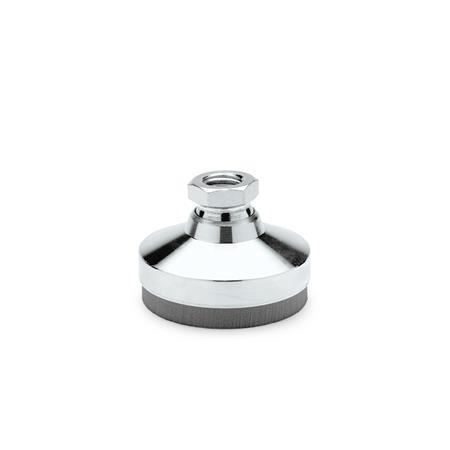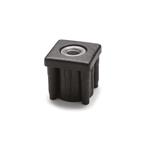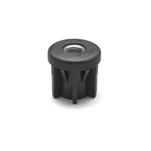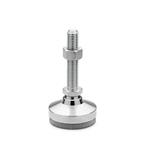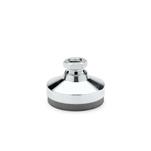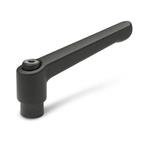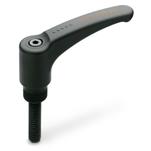Product description
The specified load in the above table of the leveling feet GN 342.1 is a recommendation up to which the dampening element can be permanently subjected.
This static load equals a thrust on the area of 0,4 N/mm2, at which the damping material reaches its optimum dynamic dampening ability. This also takes into account an additional load up to 0,6 N/mm2 in the event of a dynamic load.
Leveling feet GN 342.1 can not be disassembled.
Specification
Steel
- Property class 5.8
- Zinc plated, blue passivated
Damping element
Elastomer (PUR)
- Sylomer SR 450-12
- Anti-slip, glued
- Gray
- Oil resistant
- Operating range from -30 °C up to +70 °C
Hexagon nut ISO 4032
Steel zinc plated, blue passivated
RoHS

